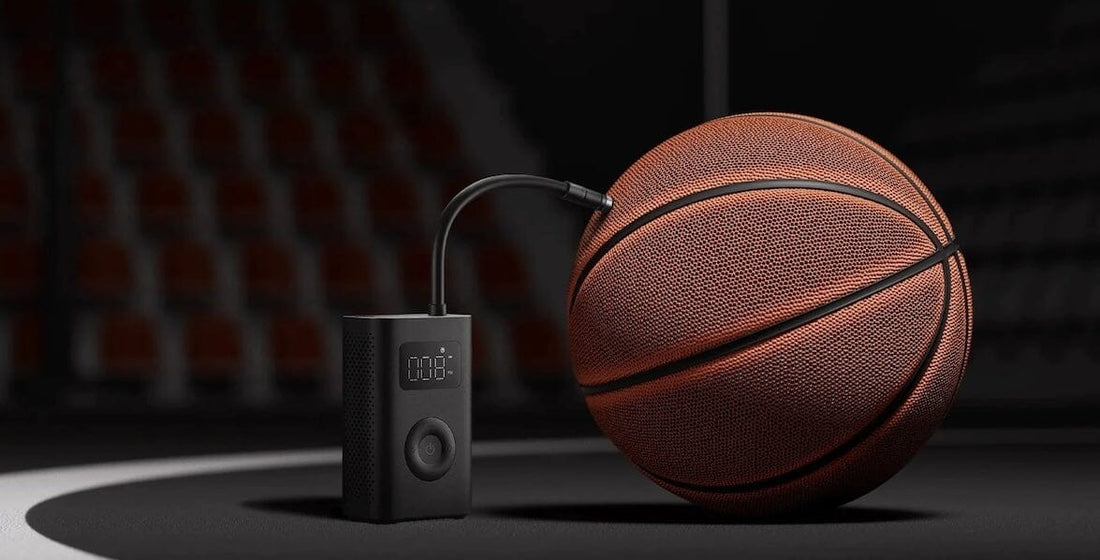We offer free shipping. All packages are fully tracked

How to Choose the Best Ball Pump
Inflate Your Soccer Performance: How to Choose the Best Ball Pump for Your Game
Are you tired of struggling with a deflated soccer ball during your game? A reliable ball pump can be a game-changer, ensuring your ball is always properly inflated and ready for action. But with so many options available, how do you choose the best ball pump for your soccer or basketball game?
In this article, we’ll guide you through the process of selecting the best ball pump to elevate your soccer performance. Whether you're a professional or a casual player, we'll provide you with all the information you need to make an informed choice. From understanding different types of pumps to considering essential features like durability, ease of use, and portability, we’ve got you covered.
Don't let a deflated soccer ball ruin your game. Get ready to inflate your soccer performance by choosing the best ball pump for your needs. Let’s dive in and take your game to the next level!
The Importance of a Good Ball Pump in Soccer
A properly inflated soccer ball is key to optimal performance. The right inflation affects how the ball moves, bounces, and impacts your control, passing, and shooting. An underinflated ball can result in sluggish gameplay, while an overinflated one may be hard to control and cause injuries.
Investing in the best soccer ball pump is a must for any player. A good ball inflator ensures that you always have a ball ready for action. Whether you’re looking for a manual ball pump or the best electric ball pump, it should be reliable, durable, and easy to use.
Different Types of Ball Pumps
There are several types of ball pumps available, each with its own advantages:
-
Manual Ball Pumps: The classic choice for those who prefer affordability and portability. They are lightweight and don't require batteries or electricity. However, they can be time-consuming, especially when you need to inflate multiple balls or if you don’t have a lot of hand strength.
-
Electric Ball Pumps: These pumps offer quick and effortless inflation, making them the best ball pump for multiple balls. They may cost more but are well worth it if you value speed and convenience. Just ensure you have a power source or fully charged batteries.
Factors to Consider When Choosing the Best Ball Pump
When shopping for the best ball pump, consider these key factors:
- Durability: Choose a pump made from high-quality materials to ensure it lasts.
- Ease of Use: Look for ergonomic designs, smooth pumping action, and features like a pressure gauge to avoid over-inflating the ball.
- Portability: For players on the go, a portable ball pump is essential. Look for models that are compact and come with a carrying case.
- Pressure Gauge: A ball pump with a digital gauge ensures precise inflation. Many electric ball pumps come with built-in pressure sensors for added convenience.
Manual Ball Pumps: Pros and Cons
Manual ball pumps are a favorite for their affordability and simplicity. Here are the pros and cons:
Pros:
- Lightweight and portable
- No need for batteries or electricity
- Easy to store and carry
- Ideal for players of all skill levels
Cons:
- Requires manual effort
- Can be slow if inflating multiple balls
Electric Ball Pumps: Pros and Cons
For those who want efficiency, electric ball pumps are a great option. Here’s why:
Pros:
- Fast inflation
- Consistent pressure control
- Great for inflating multiple balls
- Some models stop automatically when the correct pressure is reached
Cons:
- More expensive than manual pumps
- Requires power or charged batteries
- Less portable than manual pumps
Ball Pump Accessories: Do You Need Them?
When choosing the best ball pump, consider whether you need additional accessories. Some pumps come with extras like:
- Extra Needles: Ideal for inflating different types of balls.
- Pressure Gauge Adapters: Useful if your pump doesn’t have a built-in gauge.
- Carrying Case: Helps keep your pump organized and protected.
How to Properly Use a Ball Pump
To get the most out of your ball pump, follow these steps:
- Insert the Needle: Attach the needle securely to avoid air leakage.
- Lubricate the Needle: Use a small amount of lubricant like petroleum jelly to prevent damage to the valve.
- Inflate the Ball: Use smooth, steady strokes to avoid overinflating or damaging the ball.
- Monitor the Pressure: Use the built-in pressure gauge or a separate gauge to ensure the ball is inflated to the correct level.
Maintaining and Caring for Your Ball Pump
To ensure your ball pump lasts, it’s important to maintain it:
- Clean the Pump: Regularly clean to remove dirt and debris.
- Store Properly: Keep it in a cool, dry place to avoid damage.
- Lubricate Moving Parts: This keeps the pump operating smoothly over time.
Conclusion: Finding the Perfect Ball Pump for Your Soccer Game
Finding the best ball pump can greatly improve your soccer performance. Whether you opt for a manual or electric ball pump, consider factors like durability, ease of use, portability, and the inclusion of a pressure gauge. With the right pump, your soccer balls will always be ready for action.
